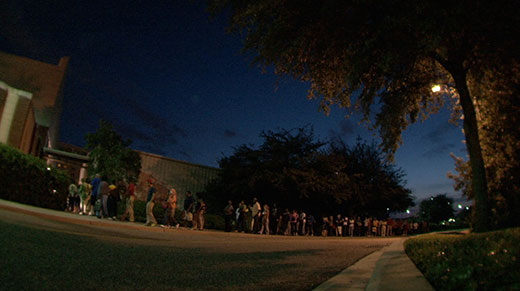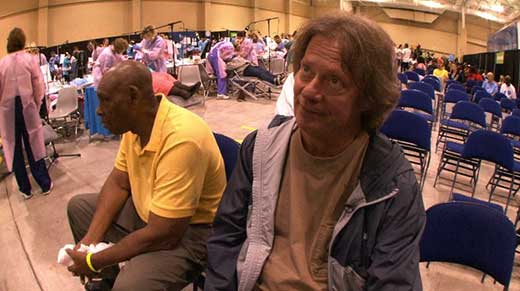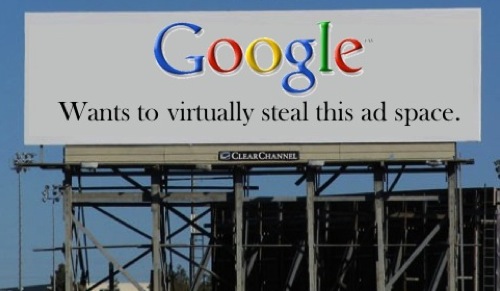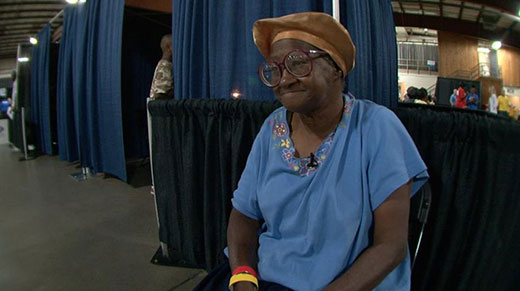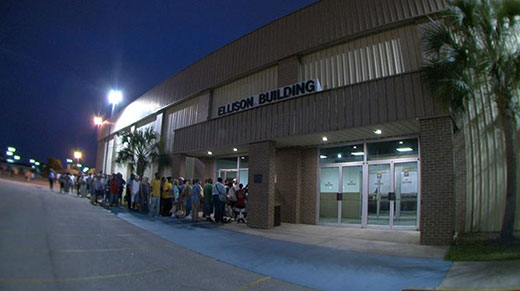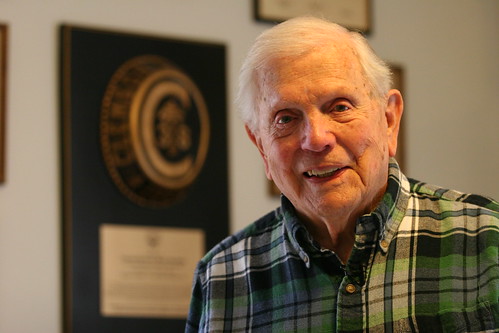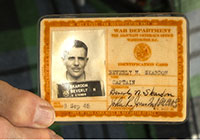I admit it…I was extremely close to this story. So close. I wonder if I could have been an effective journalist trying to tell this story for broadcast news. My path, our paths were somewhat similar…Sarah and I struggled to have Rose. Jeff and Amory struggled to have Payton.
When I wrote the original script, I planned for it to be approximately a 15-minute story in video format. I wrote this story and knew that it would have to be edited and condensed. I also knew that we were going to have to find the right voice-over artist.
The first script had many holes, yet sounded great on paper… but I was so close to the story that I’m glad I worked with a great writer at GHS. As we worked through the revisions, we knew we were going to have it voiced numerous times. Mainly, to listen to the story translated on the screen.
Many times, we producers get so caught up in the copy, we forget how the written word will translate into the spoken word. We forget that the words, when transcribed from the interviews, look and read differently than they actually originally sounded. Often, we even write ourselves into a hole visually. What do I mean? I’m referring to when what we write doesn’t translate visually to the screen. There is no visually compelling way to completely represent the spoken word.
There is an ethical implication behind telling stories that we have become very close to…we sometimes lose sight how it will truly impact the audience. What we see through the clouded, predisposed producer lens may not translate to the intended audience. Often times critical distance is necessary during the revision cycle.
Why did I want to share this experience? Well, I was very close the the first script…even a bit defensive when the idea of editing the words was suggested. This is an example of why collaborative writing and editing has become a crucial part of my business model. It’s crucial to work with the client and other experts to find the right path to tell the story.
We creative people sometimes think that it’s “our way or the highway”…but often, that outlook can be detrimental in the business world. I wanted to share the first script with you, to allow you to see the evolution of this video. I think it’s fascinating how these types of stories come to be…and the collaborative process that facilitates the end result.
——- SCRIPT 5/31/18 ———–
Video Nats: Open with video from the birthday celebration
Voice Over – There is something special about birthday’s
Amory – I know Payton will not remember any of it. As they say, the first birthday is for the mom
Voice Over –Especially that first birthday…
Jeff – It was a huge amount of prep from the food to the party theme, party favors, to the invitations..top to bottom.
Video Nats – People singing Happy Birthday
Amory – As soon as we put that little cake down in front of her…she dug right in. She mutilated that thing.
Voice Over – We want to create a time to always remember…
Jeff – It is still like a dream…I ask myself a lot…maybe it is not even real.
—- transition —-
Voice Over – Jeff and Amory met each other in college…
Amory – I knew he was the one because there was something about him. He was so different from me. But he had such a tender heart. You know…he was kind of a rough and tough guy. He drove the big truck.
Voice Over – Feel in love and started a life together…
Jeff – My wife and I both have gotten married a little bit later. Both kind of career oriented…delayed the ideas of family…having a family too late. Then we started trying, things did not work like a storybook.
Voice Over – But what they really wanted…was a family…
Jeff – Its such a commitment to start a family in today’s world.
Voice Over – They did not realize…how hard it was going to be to just to start the process…
Amory – You know, we just had a lot of difficulty getting pregnant. I found out I had endometriosis, which I didn’t know that it was a pretty severe case of it.
Jeff – There is always some fear…reluctance to bite the bullet. And then you think of going through fertility processing some of the costs you hear. It can really be…you want to try every avenue to make things happened naturally rather than medically.
Voice Over – Reluctance, Fear, and the reality of a long road ahead…
Amory – Yeah, I had a lot of breaking points. You always think…why me? Why is this happening to me? I think everybody that goes through this goes through their mind at some point. You just don’t think it’s fair. Here you have…I have a great husband, we have a good house, we are inviting to a child, we want one so bad. And to think…why is this happening? We are here, we are ready, we are financially stable, we are open arms and loving.
Voice – And then there was some hope…
Jeff – Dr. Lessey helped us…he was our initial contact. He had done a lot of research with endometriosis…he was really carried the ball as far as carrying us through the process.
Amory – I don’t know, I just prayed with it every night. I felt really good about things. And I felt I had more of a positive attitude. Dr. Lessey was the one who did the procedure and he was really adamant about being the one to do the procedure this time around. I just know that day when I went in there…I just knew it that it happened?
Voice Over – And then…it did happen…that one moment in time…
Amory – The day we found out we were pregnant, I was at work of course.
Amory – I went to do the blood test and drove into work. I knew it would take a couple of hours, so I figured I would get the phone call at 11am. I told them I was not going to answer the call at work. I said just leave me a message and I will check my voice mail. That is what they did, they left me a message…it was about 11am.
Amory – I went out to the car and I told myself it was not going to be the end of the world if I have bad news. I remember hearing the voice mail…I have good news for you
Amory – I just could not even believe it. I just remember crying and it was awesome.
Amory – I remember calling Jeff and I couldn’t wait. I had to call him right away. I think he was just stunned. he was almost speechless. he was like….you are kidding me.
—- transition —-
Voice Over – Birthday’s are special, especially first birthday’s…they help you remember. It was just one year earlier before little Payton blew out these candles that Jeff’s remembers when his dream became a reality.
Jeff – I guess i knew it was real about 2 o’clock in the morning on November 29th last year when my wife came to me and woke me up to tell me it was time to go to the hospital. Then it became real.
Voice Over – And for Amory, reality was before even way before Payton even arrived.
Amory – I would say we knew it was real when we went to have our first ultrasound and hear the heart beat. That was only seven weeks…but yet you could still see on the ultrasound. You heard the ba bump ba bump ba bump and it was just amazing.
Voice Over – Now this little reality is everyday life.
TRANSITION NATS… BATH TIME
Voice Over – Famly time at the end of a day brings the normalcy of a routine.
Amory – Usually we come home and feed her…then we have a little bit of play time. Then we try to spend as much time as we can with her during that small amount of time we have with her. We then usually bring her upstairs, try to start winding her down. Give her a bath, she loves her bath…
Voice Over – There is something about bath time and winding up the day. For working parents, those hours in the evening are ever more important.
Amory – Well…when we come home, it is hectic. Both parents working…trying to keep Payton on a schedule of eating but yet we want to spend as much time as we can with her because our time is limited during the week.
Voice Over – This reality, this everyday life, brings lots of reflection…
Jeff – It is still like a dream…I ask myself a lot…maybe it is not even real. It seems to good to be true to have a beautiful little girl, crawling soon to be walking, one year old…it just seems unbelievable.
Voice Over – Reflection that has empowered Jeff and Amory to share their story…
Jeff – Initially there is stigma until you get out and meet people and find out the condition of infertility…it is out there…it is spread around. When you are able to talk about it…you find out other people’s stories. And in my opinion, there is no reason to hang your head low…it is just a problem you need to work through.
Amory – It is ok to have issues like this…you are not weird or different…or to be shunned on because you have fertility issues. And if you continue to get the right help and get people involved…you can take something that is the hardest thing in your life and make it the best thing in your life!
Voice Over – That this picture perfect story, even with the long road, has become their everyday dream come true…
Jeff – I can remember leading up…it was a long road…it is probably good not to forget it because it makes it that much more valuable how hard you had to work to get the family you have now.
Amory – I understand what people say now…how awesome it is to be a mom. I did not really understand that before. But she has made us whole. She has just completed our lives.


